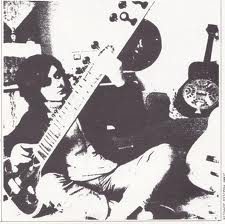| 11 October 1994 Unledded premiers published On This Day 2020 |
| 1994 11 October Unledded Project premiers at Beacon Theater, NY ♪ Kashmir (Page & Plant) Soundcloud |
- 1988 Jimmy Page Outrider Tour - Oakland, CA at Oakland-Alamada County Coliseum Arena
- 1994 Page & Plant Unledded Project premier - NYC at Beacon Theater and Londong at Planet Hollywood
1995:
The London Studios (a.k.a. The South Bank Studios, The London Television Centre and Kent House) is a TV studio complex in Central London, and are the main studios for ITV, the UK's main commercial TV network, and London Weekend Television (LWT). The complex currently has six studios, but has housed up to nine in the past. One of those studios was where Jimmy Page and Robert Plant recorded Kashmir for the Unledded Project.Kashmir:
"It originated from playing around on the tuning," Jimmy Page said in It Might Get Loud.
Jimmy Page says he had a sitar before George Harrison did, though he acknowledged when he said it that Harrison was the better sitar player. Jimmy Page obtained a tanpura (stringed drone instrument) in India in 1967. Back in the UK he recorded White Summer on his Simon home recorder, playing and overlaying the other instruments. Jimmy Page then used a sitar on the Muareeny Wishful album (with folksinger John Williams and guitarist Big Jim Sullivan) released in 1968. He was no stranger to alternate tunings when he turned his genius loose on Led Zeppelin.
DADGAD tuning is credited to Davey Graham, a songwriter/musician, who was inspired by the oud music of Morocco. The open strings of DADGAD tuning evoke the drone of traditional Scottish and Irish pipe music, northern African music and the Indian sitar, depending on the song. With Led Zeppelin, Jimmy Page used DADGAD tuning in Kashmir, Black Mountain Side, White Summer and the unreleased Swan Song (later released as Midnight Moonlight, with The Firm).
 |
| Thanks to Dave Lewis' TBL for this photo of Jimmy Page |

I play in DADGAD quite a bit. Graham gets credit but it predates him. It has the benefit of open tunings such a D where one can play all over the place and drone on the open strings. Jimmy uses a heavy dose of suspended chords regardless of the tuning. I used to ask people why Jimmy wasn't playing guitar and when they said they didn't know I would say it was becasue too many of his chords were suspended.
ReplyDeleteDADGAD is interesting because as an open chord it can be viewed or heard three ways. From the D-chord view it is a D suspended 4th, with octaves on the D and A. From the G point of view it is a G suspended 2nd while from the A perspectvie G is the 7th and D is flat fourth adding additonal tension.
All this without fingering a string, just strum. It is easy to explore and discover other notes and chords that work well. If you are more formal and studious the.re are at least 20 chords with ADG: Most require one or two additional notes. This makes it a drone string wonderland with a mystical feel. Clearly open D allows boat loads of drone string variations, but they are major and more resolved. There are also some wonder drone string possibilities in standard tuning as well, but fewer of them sound as good or are as easy to discover.
Tune your guitar to DADGAD, play around and you'll be surprised at what you discover. Almost everything sounds good, and some of it sounds awesome and like nothing else you have ever heard. The next time you hear White Summer / Black Mountainside listen for the the drone strings.
Great information, Doug and a great suggestion in your last paragraph. I think I'll retune my guitar this afternoon and see what comes of it. It can't sound any worse than the standard tuning that I use now!
Delete